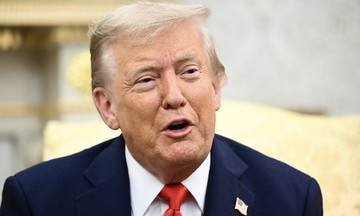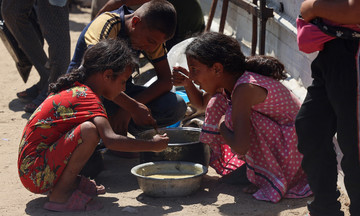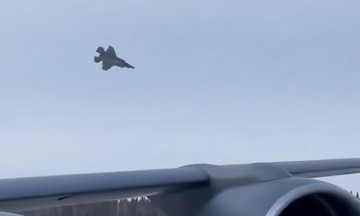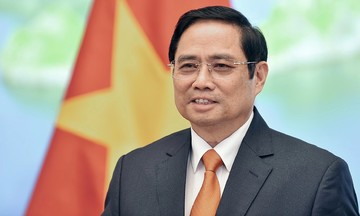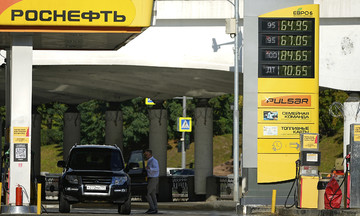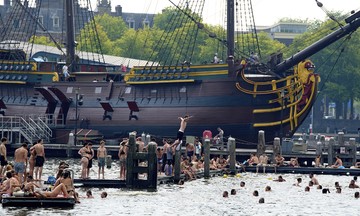When Russian President Vladimir Putin launched the military operation in Ukraine in 2/2022, Ivan Chenin left his comfortable student life in Moscow to volunteer in the Donbas region of eastern Ukraine. He delivered humanitarian aid in Donetsk and Luhansk, areas Russia calls "new territories".
After returning from Donbas last year, Chenin decided to enlist in the "Thunder Cascade" volunteer unit as a professional soldier. "I'm a reconnaissance UAV pilot," he said. "My task is to observe and scout enemy territory".
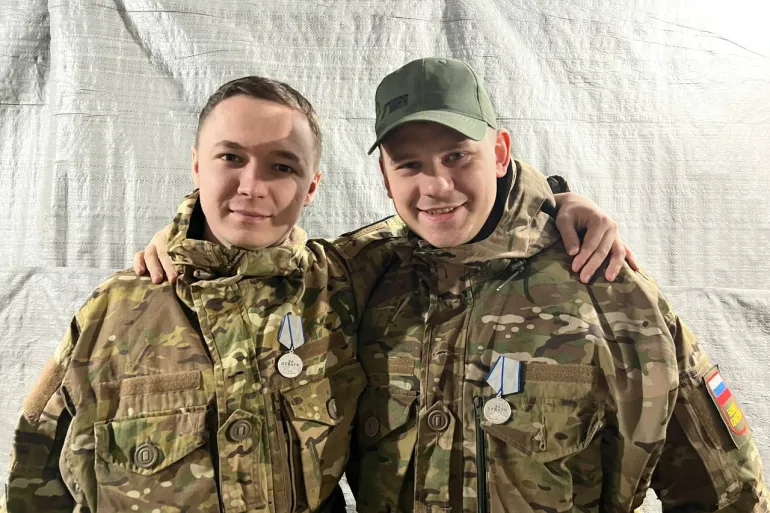 |
Ivan Chenin (right) volunteered to sign a contract with the Russian army to fight in Ukraine. Photo: Al Jazeera |
Ivan Chenin (right) volunteered to sign a contract with the Russian army to fight in Ukraine. Photo: Al Jazeera
Chenin is one of nearly half a million people who joined the Russian military in 2024 as contract soldiers or members of volunteer units. While Ukraine struggles with manpower shortages on the front lines and has resorted to increased recruitment in the rear, Russia doesn't appear to have this problem. In March, President Putin declared at a meeting that Moscow was recruiting new soldiers at twice the rate of Kyiv.
Ukrainian officials reported in April that the Russian army planned to increase the number of soldiers fighting in Ukraine by another 150,000 this year. Earlier this month, Vadym Skibitsky, Deputy Head of the Ukrainian Military Intelligence Directorate, assessed that "Russia's recruitment plan is proceeding at a pace of at least 105% to 110% each month" to meet the target by the end of the year.
Both the Russian and Ukrainian armies are believed to have lost hundreds of thousands of soldiers in over three years of conflict. The battlefield has become stagnant, with both sides intensifying attacks using long-range weapons and suicide drones, making the lives of infantry soldiers more precarious than ever.
During the first year of the war, thousands of young Russian men crossed the border into neighboring countries like Georgia and Mongolia to avoid conscription. Police patrolled subways and raided migrant housing to apprehend those of conscription age, pressuring them into military service.
However, this fear of forced conscription among young Russians has largely dissipated after three years of war, as Russia has reduced its battlefield casualties and maintained its advance against Ukrainian forces.
"In reality, Russia doesn't need to issue draft notices under partial mobilization anymore," said a human rights lawyer in Russia. "Instead of issuing mandatory draft notices, authorities in many Russian provinces have switched to recruiting contract soldiers. Only professional soldiers who sign contracts can fight in Ukraine".
President Putin last year signed a decree providing a one-time allowance of 400,000 rubles (nearly 5,000 USD) for soldiers signing service contracts. Local authorities are encouraged to at least double this amount, in addition to a minimum monthly salary of around 2,500 USD, along with additional perks like loan assistance.
This income is considered generous for young people from disadvantaged backgrounds or from poor, underdeveloped rural areas with limited job opportunities, making finances a significant motivation for them to enlist.
Many Russian soldiers are fighting in Ukraine for something even more appealing than money: freedom.
Russia has long had a policy of recruiting prisoners into its armed forces, with some promised full pardons after 6 months of combat. Tens of thousands of Russian prisoners are believed to have participated in the fiercest battles against Ukraine.
President Putin said that prisoners who sign up to fight in Ukraine are "atoning" for their crimes against society. "We are all human and we can make mistakes. They made mistakes too, but they sacrificed their lives for the Motherland and atoned for their sins," he said at an event in late 2023 commemorating prisoners who enlisted and died in Ukraine.
If these prisoners survive their contract period, they return to Russia as free men. Last year, the Russian government expanded the program to recruit those awaiting trial or under investigation.
 |
Billboards advertising military contracts in St. Petersburg in 2024. Photo: AFP |
Billboards advertising military contracts in St. Petersburg in 2024. Photo: AFP
"On average, 50 people leave prisons in a single batch, about once a week. So you can imagine how large this force is," estimated Ivan Chuviliaev, spokesperson for Go By The Forest, an organization that helps Russians avoid the draft.
The number of inmates in Russian prisons has decreased by 120,000 in the past two years, to a record low of 313,000, according to an article in the daily newspaper MK in February. Numerous correctional facilities across the country are now closed.
According to Oleg Ignatov, senior Russia analyst at the Crisis Group think tank, in addition to abundant recruitment, Russia can maintain its numerical advantage over Ukraine thanks to tactical changes that have reduced its casualties.
"Russia has almost stopped using heavy vehicles on the battlefield because they're very vulnerable to UAVs. The last time Russia used heavy equipment on a large scale was during the Kursk offensive in the winter," Ignatov said.
He added that the Russian army no longer uses large groups of soldiers to attack Ukrainian lines. Instead, they divide their formations into smaller groups, sometimes only one or two people, to gradually infiltrate Ukrainian defenses under the cover of UAVs and artillery.
After penetrating deep into Ukrainian lines, they regroup and coordinate with the main front to attack the defending forces from multiple directions, significantly reducing casualties, Ignatov explained.
A survey conducted earlier this year by the independent polling firm Levada Center found that 75% of Russians support the military operation in Ukraine, including people like Chenin, who are willing to enlist and fight without coercion. "The first and most important thing is love for the country. Everything else is secondary," Chenin said.
Vu Hoang (Al Jazeera, AFP, Reuters)



